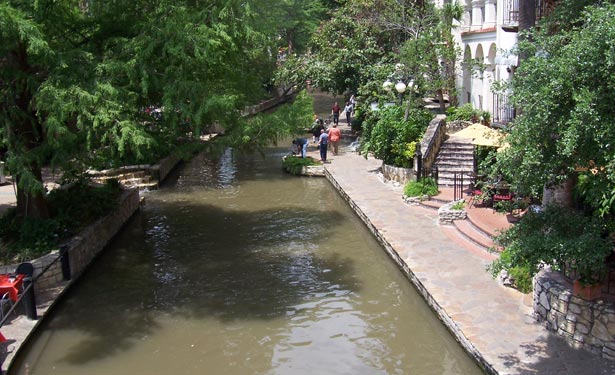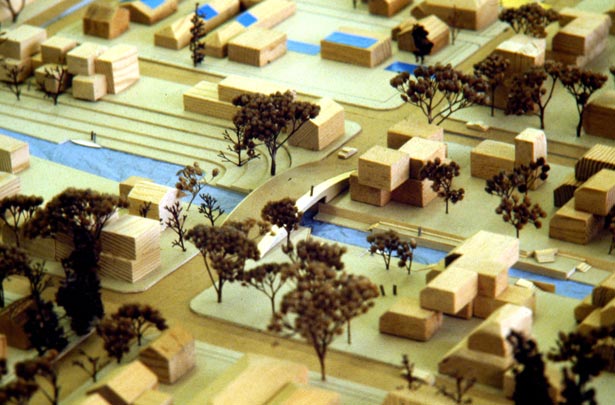
Dear Diary: People have been asking me of late if it isn’t time we thought again about building the Emerald Canal. I usually respond with a “Don’t hold your breath unless you can hold it for years or some such,” but they are persisting.
“Isn’t the time ripe now for the renewal of the West University Neighborhood? Wouldn’t the canal be an excellent way to promote new higher density housing in the area along a blue/green park strip extending from the current end of the Millrace to Amazon Creek? Wouldn’t it be terrific to be able to connect up our riverfront bikeways and walkways south through town to the Amazon corridor and all the way to Fern Ridge?” Must be something in the air. The prospect of downtown renewal has everybody giddy.
And then they ask the usual questions and I trot out some of the old patter.
It would be around 11-12 blocks long somewhere in the Oak-Pearl zone. Yes, there have been a number of possible routes looked at, the idea being to minimize impact and promote desirable development; no, no final route was ever selected. Yes, it would require some up-to-date planning. Yes, there were two large, elaborate models built and shown around town, showing what it might be like, that generated a lot of support.
“Did they know,” I’ve had fun asking, “that George Washington had proposed a 3,000-mile canal, linking both sides of our country?” I show them my slide of his scheme. “Ah, now that’s visionary!” I’d say. “I’m only talking 11 blocks!”
And what about the water? How do you get it to run uphill? Actually, the end of the Millrace is higher than the Amazon at 17th by about 10 feet and so the water would just run downhill. Sometimes I throw in a little Geomorphology 101. “The Amazon is a Yazoo stream,” I’ll say, “which means that the glaciers left it lower than the river and it has to run parallel to the Willamette until it can catch up.” But that’s usually more than anybody really wants to know.
What did the Emerald Canal have to do with flood control? Wasn’t that an important way of paying for it? Yes, that was the amazing part. According to Army Corps of Engineers’ studies, the Amazon basin will back up with water under a 100-year flood because the water can’t get out to the west fast enough. Today under the right conditions it will flood a large area of the central city, just like old times before the 1950s concrete ditch that Congressman Charlie Porter helped fund. Urbanization in the south hills has meant more and more runoff, and so the situation continues to get worse.
Enter the reversible Emerald Canal to carry the excess water through the city to the river with its infinitely greater capacity to absorb runoff. Garrett Rosenthal, then with LCOG, did the original calculations and the corps confirmed them. The rising head of water in the Amazon could reverse the flow and send the floodwaters north through the city to the Willamette, and it would be an order of magnitude cheaper to make a canal than having to build upstream dams on Coyote Creek in the hills south of Fern Ridge.

Getting the water from the end of the present Millrace to the river, however, was the big problem. This is the part that most people forget or never understood. Returning the Millrace to the river wasn’t just good downtown development, the city remembering itself, the undoing of past errors, green urban watershed planning or aesthetic delight. It was to be a way to drain the city when the big need came. And this was before we began to experience some of the changing weather patterns of recent years.
But the “Mama Gloria” episode is still my favorite. How close we all came to starting renewal in the West University area just seven years ago!
Diane and I had just come back from two months in Italy (1998) and my old co-conspirator, Charlie Porter, told me he had someone he wanted me to meet, a wealthy widow just recently returned from years of living in Germany, who was looking for a local water-related project to invest in. Oh sure, I thought.
But Gloria Teichert turned out to be real. Her German husband had made his fortune as an interior designer, some said working for the Chicago mob in earlier years, but I never believed that part of the story. She had been instrumental in convincing the German government to fund water projects on Mount Kilimanjaro in Africa that would bring some of the snow pack to villages on the plains below. The very grateful Africans named her Mama Gloria.
So, I gave her the Emerald Waterways show in the house she’d moved into here in town, surrounded by all the valuable paintings and artifacts she’d brought back from her castle home. She was enthusiastic and had me take her on a tour of the West University neighborhood in her chauffeured Lincoln Town Car. The area needed a good makeover, she pronounced, and she could afford to buy a good piece of it.
Next she picked out a storefront she wanted to rent on West Broadway (where DIVA is today) where we would build and show the new model of the Emerald Canal. Charlie, Jerry Rust and I took Gloria to meet with Paul Farmer, our then planning and development director, who was new in town and hadn’t yet heard the saga of the Emerald Canal. After another version of the show, he asked in all seriousness, “Why haven’t we done this?” Good question, I responded. Timing, the times, the cost, the cycles of the Oregon economy, the complexity of the project …
Long story short, both Gloria and her brother became ill, he quite seriously, and they decided to move to Canada, where she is no doubt still today applying her sharp mind, imagination and wealth to some vast project. I like to think of Mama Gloria up there in the north arranging for the digging of an inland passage called The Maple Leaf Canal.
Jerry Diethelm of Eugene is an architect, landscape architect and planning and urban design consultant. He is also a professor emeritus of landscape architecture and community service at UO.